Sirpur is located on the banks of River Mahanadi and is about three hours away from Raipur,
Chhattisgarh. It's a small town, but has a lot to offer to all kinds of travelers - historical, art based, adventurous and actually even more!
However, it wasn't always a town for tourists and travelers. Sirpur was a small and sleepy town through most of its modern history but for the last decade and half, when excavations began and an ancient civilisation was discovered.
 |
| Discover Sirpur, Chhattisgarh |
Actually, it was almost fifty years ago when the first inscription was found from the area which talked about the presence of Shiva temple in the vicinity. However, it was only in the early 2000 that work actually began to excavate the area and what the archaeologists found changed not just our understanding of the region, but also about the evolution of temple architecture both here as well as in South India.
 |
| Carvings on an excavated temple column |
Some of the discoveries made here have completely baffled the historians and has helped understand the history of the region and the religions much better. For instance, the
Buddha Vihara found here is believed to be four times larger than the famed Nalanda university in Bihar, which is quite an important discovery.
All religions (Hinduism, Buddhism and Jaisnism) of the time coexisted peacefully and remains of all of them have been found in vicinity. Here is a short guide about beautiful town, covering some of the most significant historical discoveries there.
Lakshmana Temple
The
Lakshmana temple is located in the village
Sirpur in Mahasmand district of Chattisgarh at a distance of 90 km from the state capital of Raipur. Sirpur is derived from the ancient name Sripura which was once the centre of power of South Kosalas during the rule of Sarabhapuriyas and Panduvamsis from 6th to 8th century AD.
 |
| Lakshman temple |
The archaeological remains in and around Sirpur consists of both Hindu and Buddhist monuments in the form of temples and monasteries. Among them, the most well preserved magnificent temple is the east facing Lakshmana temple built by Vasata, the mother of Mahasivagupta Balarjuna in 7th century AD.
Dedicated to Lord Vishnu, this brick temple stands on a high massive platform accessible by steps in the north and the south. The plan of the temple consists of a garbagriha, antarala and a mandapa. The mandapa now in ruins, was originally upheld by stone pillars in rows. The exquisitely carved doorframe depicts figures of Seshasayi Vishnu along with his other incarnations. This temple is one among the best examples of brick temples of ancient India. Ref ASI.
Lakshmana temple also forms the backdrop of the famous
Sirpur Music and Dance Festival which takes place every year in the month of January.
Budh Vihar
A Budh Vihar is a temple cum residence, akin to the monasteries in the west.
 |
| Buddha |
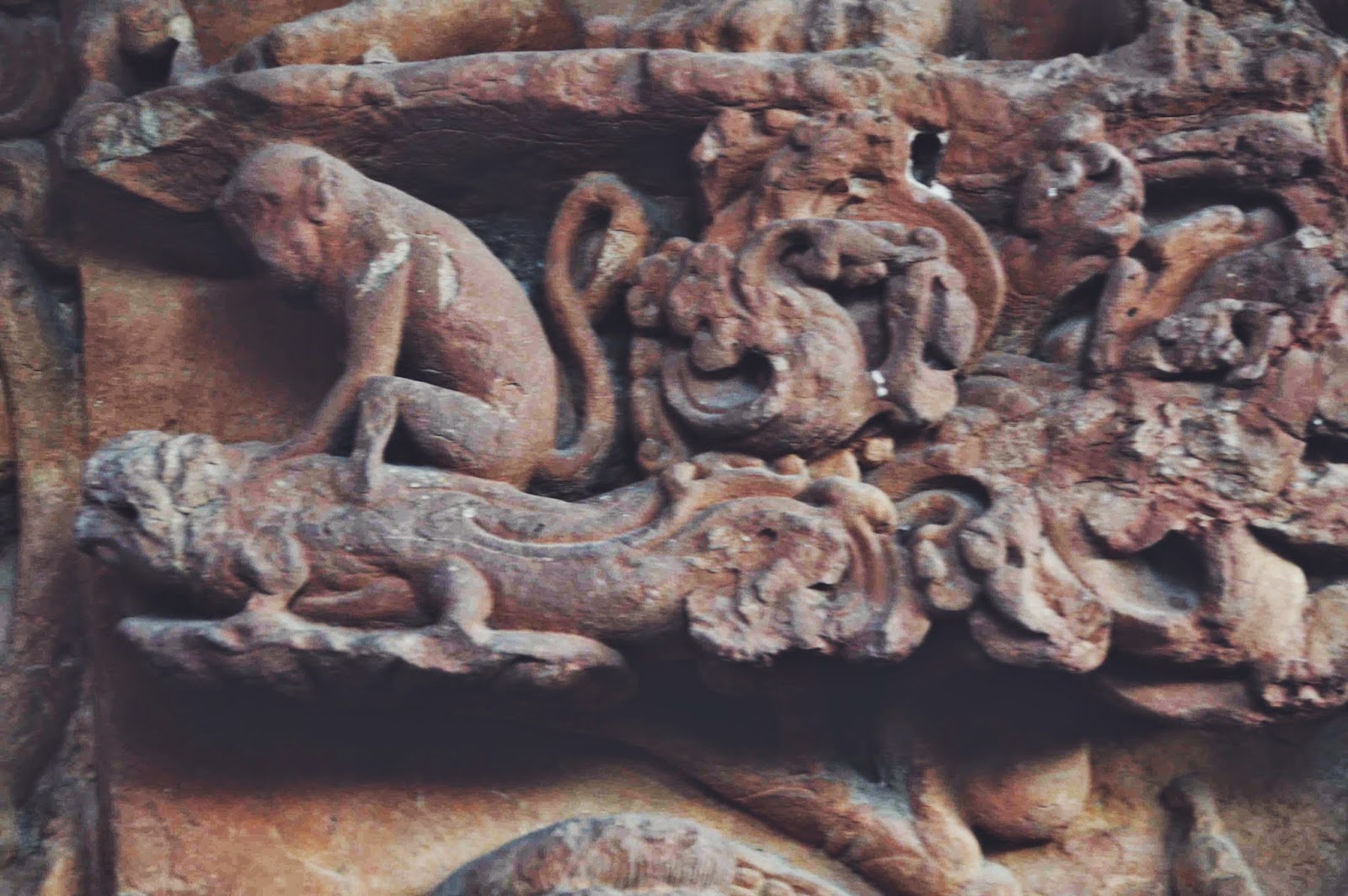 |
| Panchtantra tale |
 |
| Shiv and Parvati |
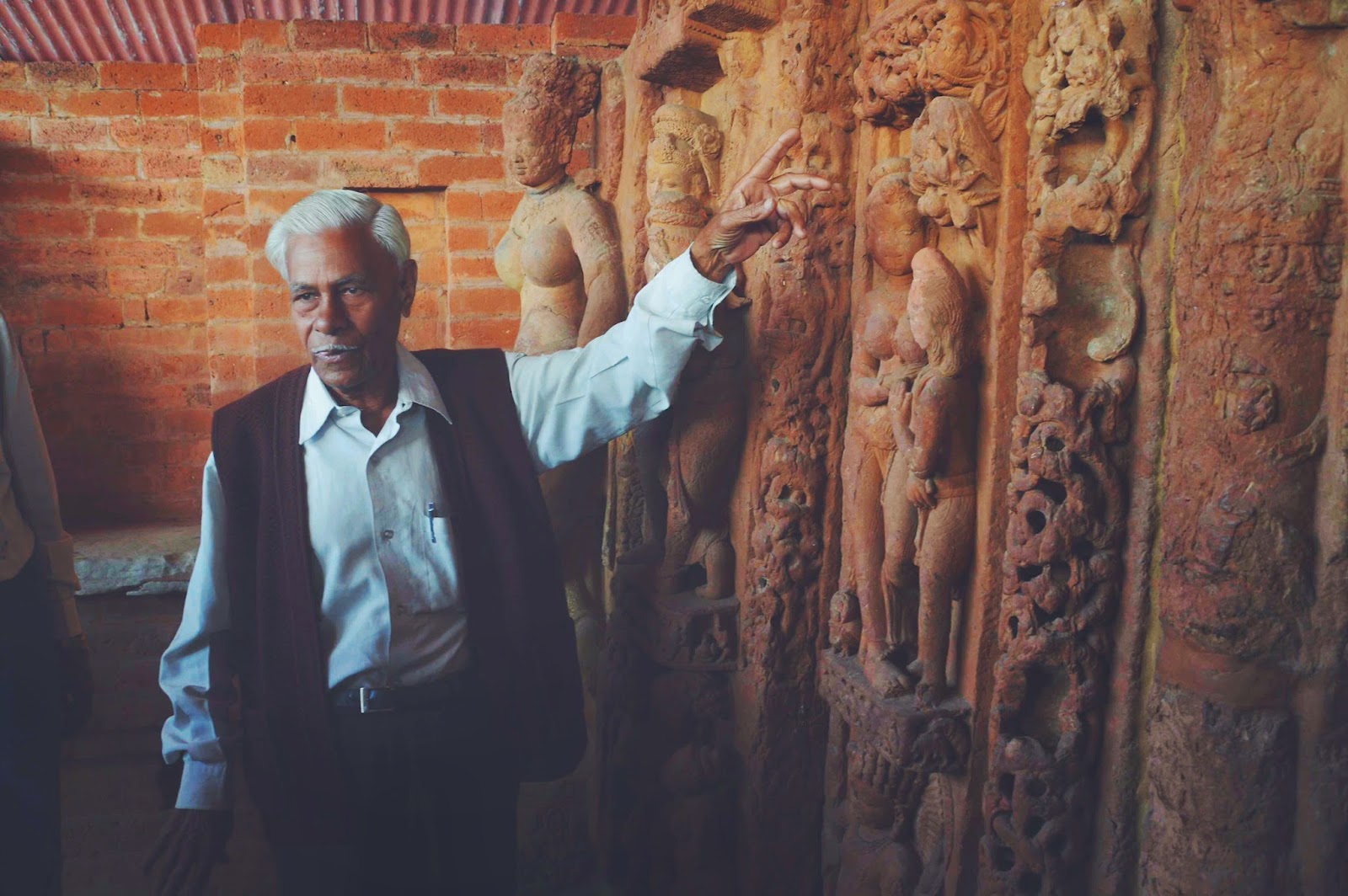 |
| Our archaeologist telling us a tale |
Some extremely prominent buddhist monuments have been found in the region and the most important of these is the
Budh Vihar. The carvings at the Vihar are absolutely unmatched in beauty and splendour. The carvings say a lot about the way of life then, including a story about the pet dog being taken for a walk. I loved the Panchatantra carvings there - the story of the monkey and alligator.
There is also a female Vihara just behind the main one. A female Vihara was identified by the fortification around it, also there were bangles made of ivory that were found here.
Market area in ancient Sirpur
The
Sirpur Market excavated here is one the oldest and the largest in the world. The market has a very strategic location very close to the Mahanadi river.
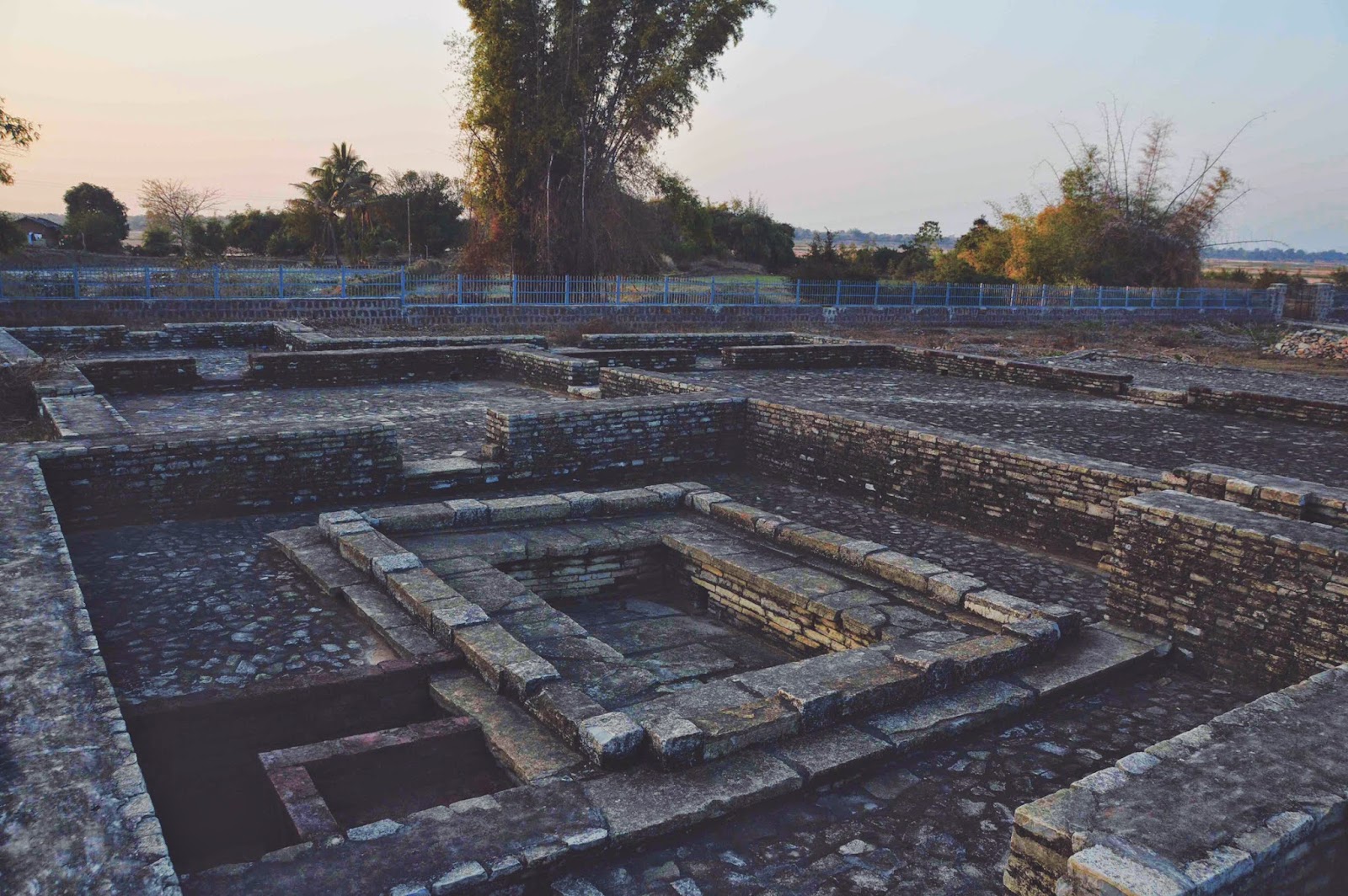 |
| The Ayurvedic bath |
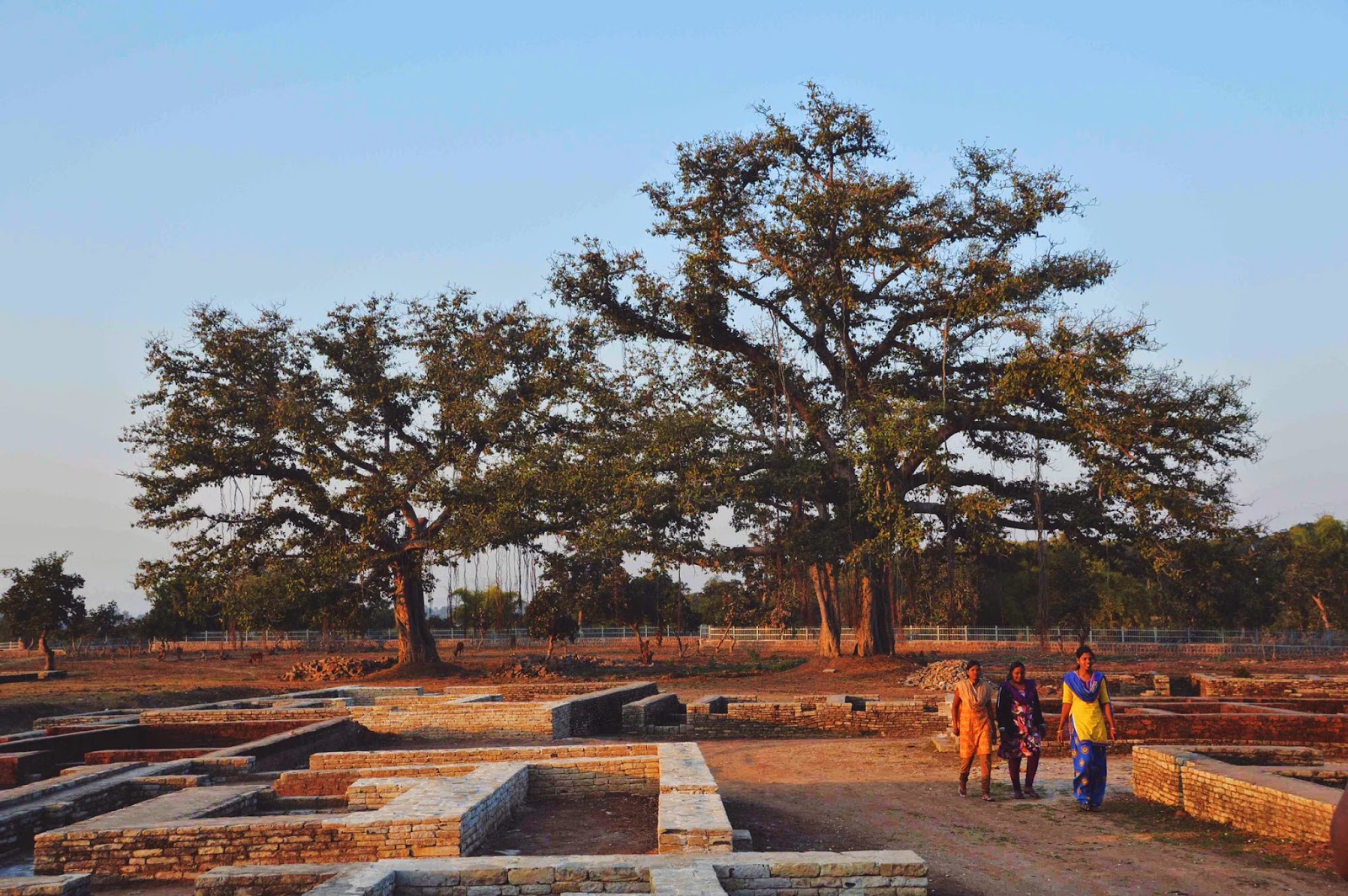 |
| Bodhi trees |
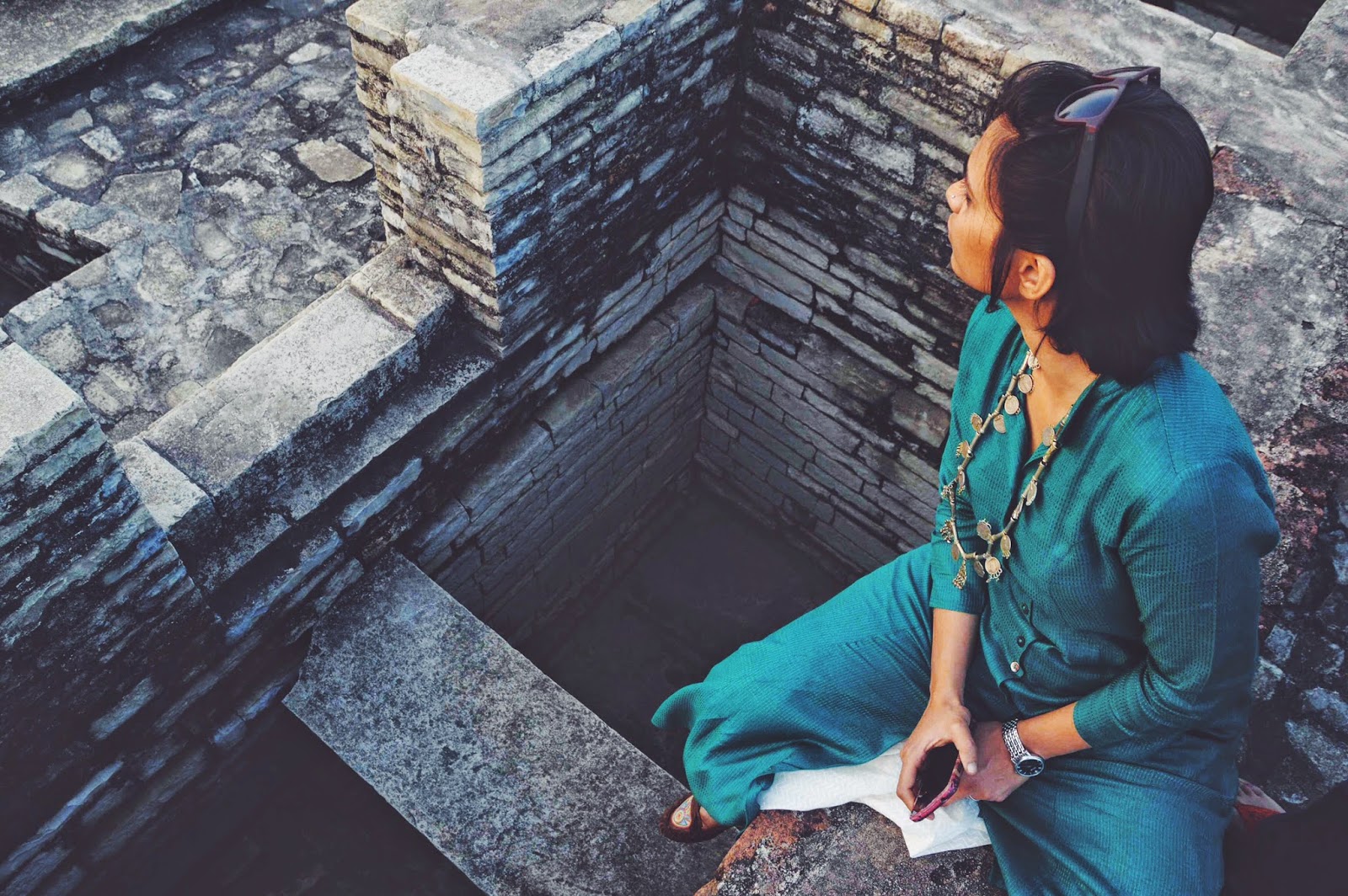 |
| Prajakta inspecting the safe vault |
The market has well planned wide and parallel roads. The market is also divided into specific regions based on the type of goods sold - there was a gold market, iron market, grains market and so on. The market also had places of worship as well as a watch tower in the centre. There was also a hospital where Ayurvedic surgical operations were also conducted. People came to the market both for trading as well as medical tourism.
The shops were all double storied, though now only the base survives.
There is also a Bodhi tree here where Buddha is believed to have come and meditated. A sapling from Bodh Gaya was brought in for the purpose. This is also the point where the oldest Budh Vihar in Sirpur was constructed. Some very significant 85 bronze images of Buddha have been excavated from the site.
The granary was one of the most important interesting parts in the market. Special underground granaries were constructed which were then covered and protected by stone slabs.
The market also had Ayurvedic bath where the patient had to immerse into a tub of medicated liquids for treatment. The tub was drained using underground drainage system. In fact the entire market had underground drainage which seemed far more advanced to the ones that exist in the region today.
Surang Tila - Shiva temples
Surang Tila was excavated in 2006 and had huge trees lying all round. It was already known because an inscription was found which talked about a temple here. The inscription said that it was built by Shri Ba in 7th Century AD. It was a panchayatan temple style of construction - the main temple in the centre and four in the corners. The entry gate is before the steps. The ghat of the river was close by - people took a holy dip in the river Mahanadi and then entered the temple through the entry gate.
The temple gate here busts the myth that the entry gates originated in the South India first. The fortification of the temple was also seen here (all twenty four temples) before it originated in South.
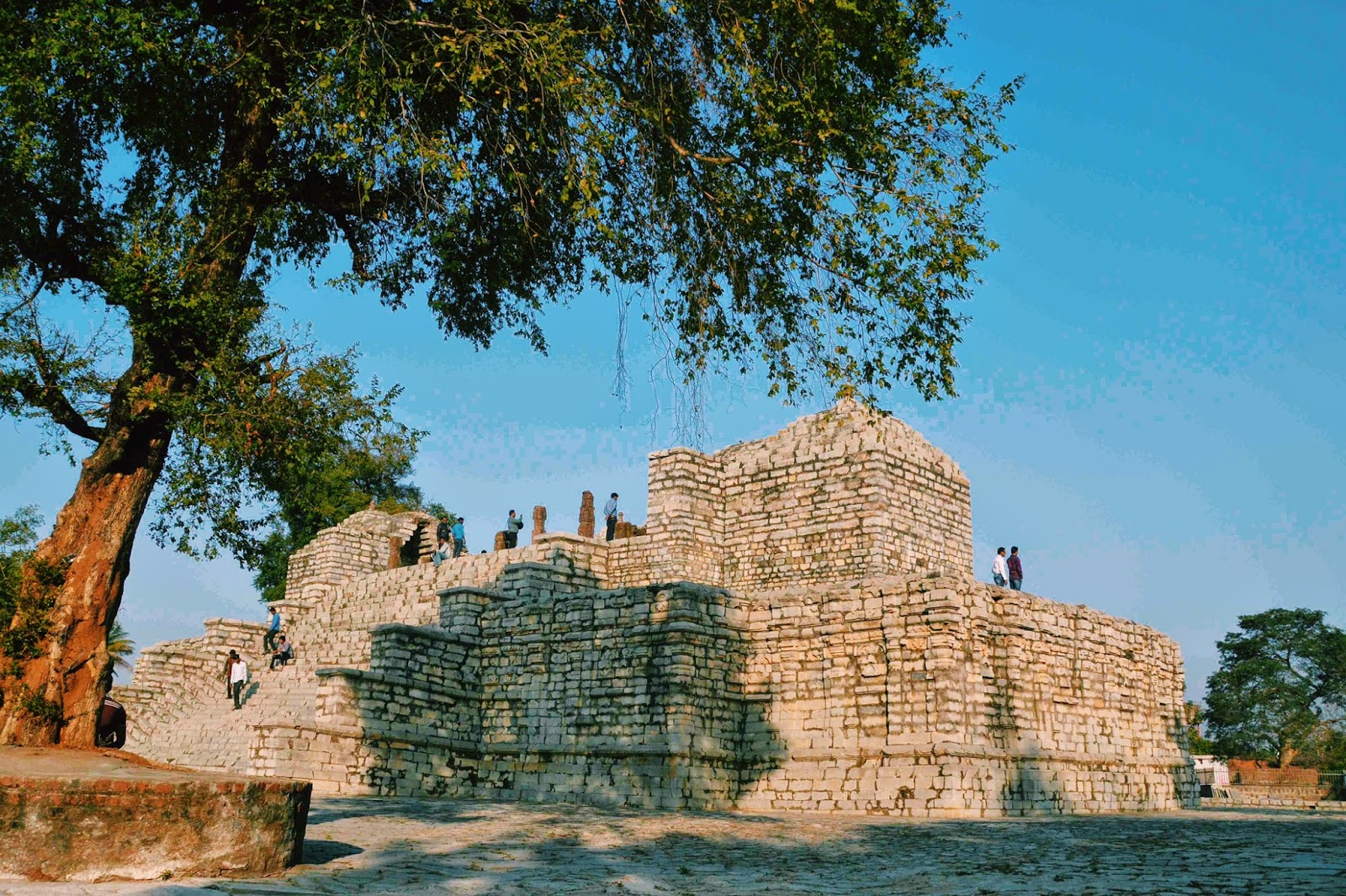 |
| The pyramid on which the temple sits |
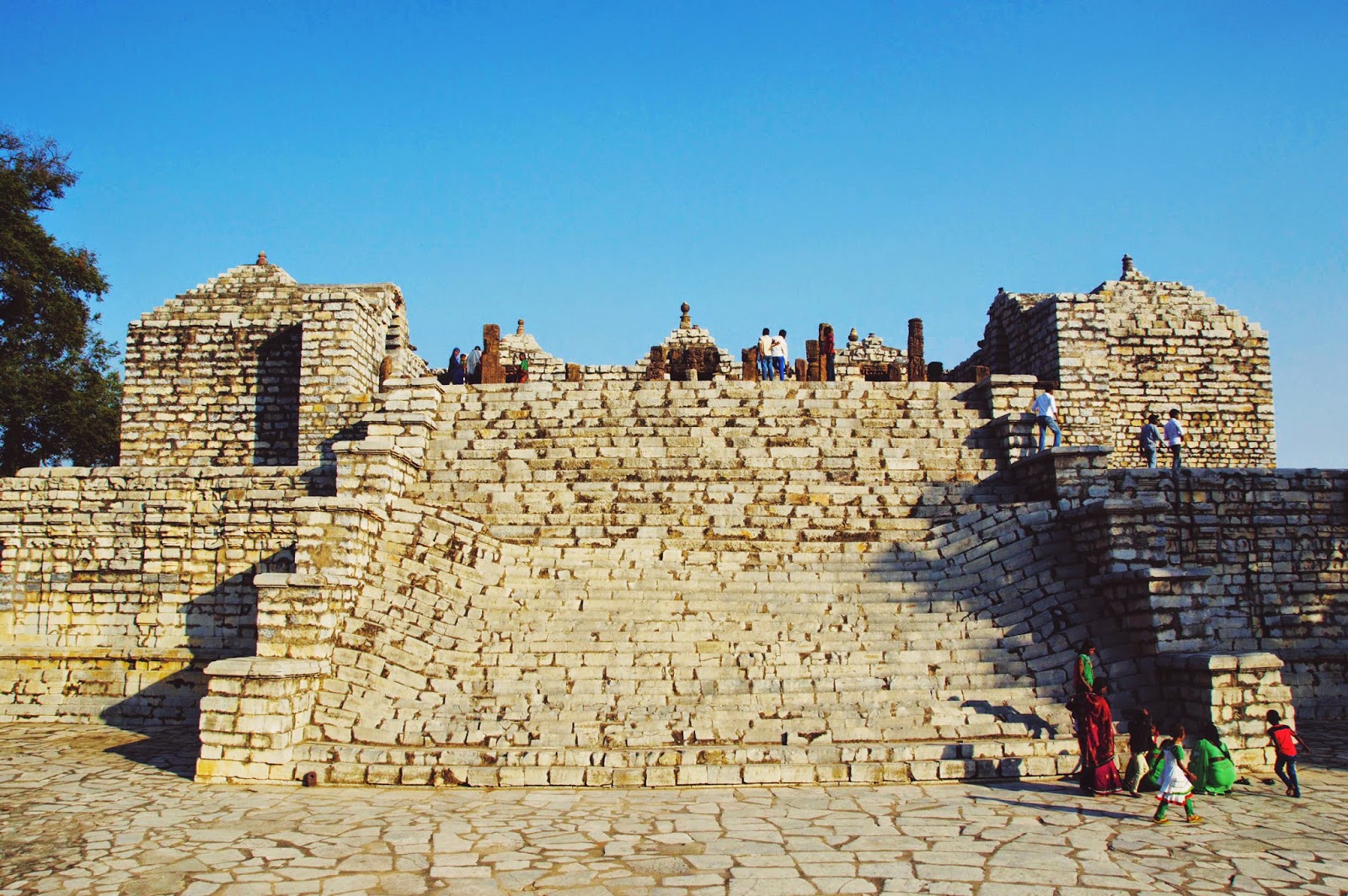 |
| Steps to the top - the deformations on the side are due to an earthquake |
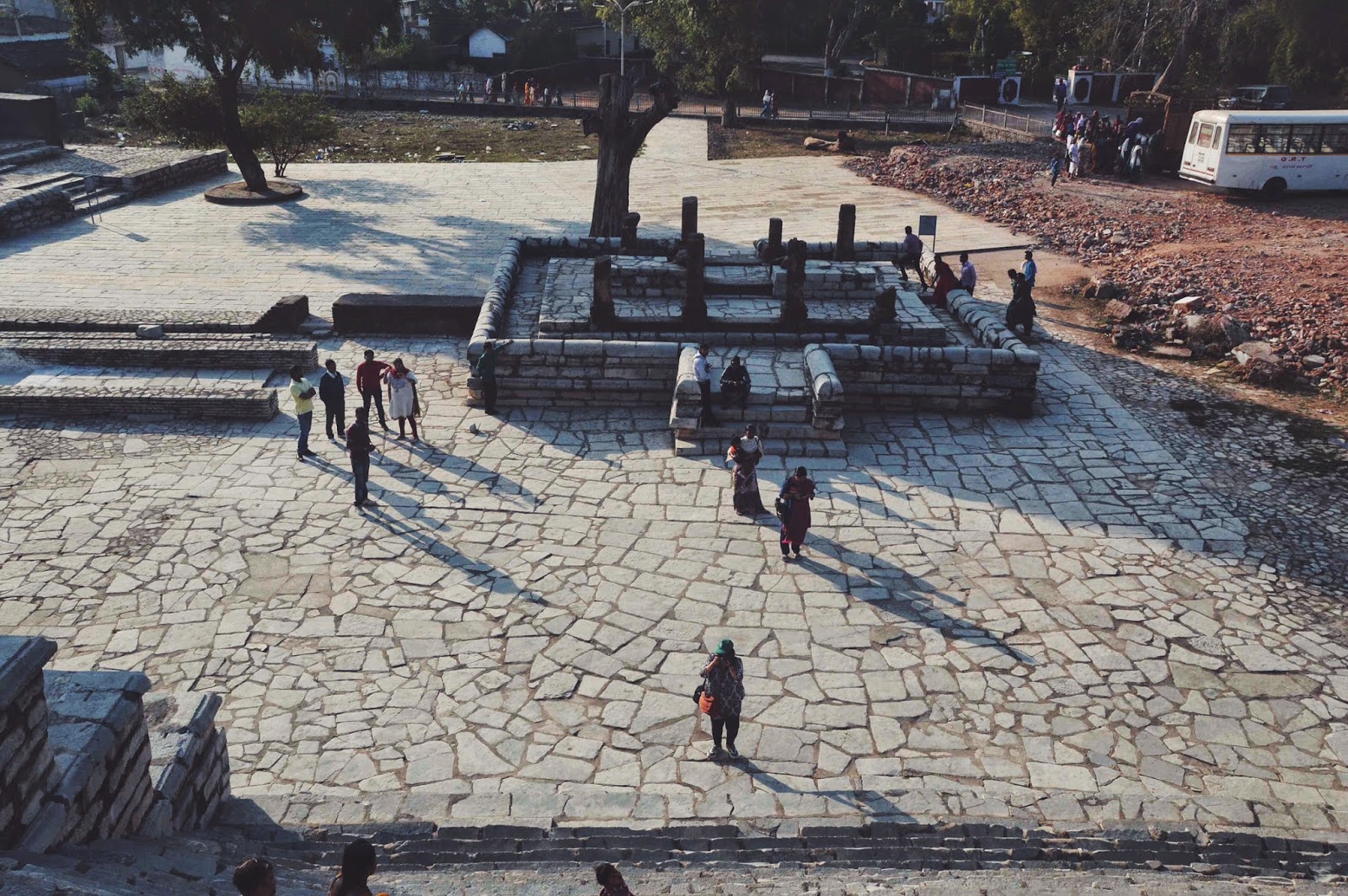 |
| View from top... |
The temple had a priest's house to the south and to the south of the priest house, there was a big tank where the priest would take a bath before entering the temple.
The
Surang tila is a Shiva temple and there four different types of shivlingas - white, black, red and yellow. White was installed a Brahmin, by Red was by Kshatriya as he deals with blood, Yellow by Vaishya as he deals with Gold and Black by Shudra; however, all of them worshipped all the Shivlingas. The fifth temple is the Ganesha temple.
The material used in the temple is sandstone. There are 32 pillars on top of the temple where the Shivlingas are installed, an inscription of the original design of the temple is present on one of the pillars. The roof has now collapsed and only the pillars remain.
 |
| The surviving garbha griha |
 |
| One more beautiful carving |
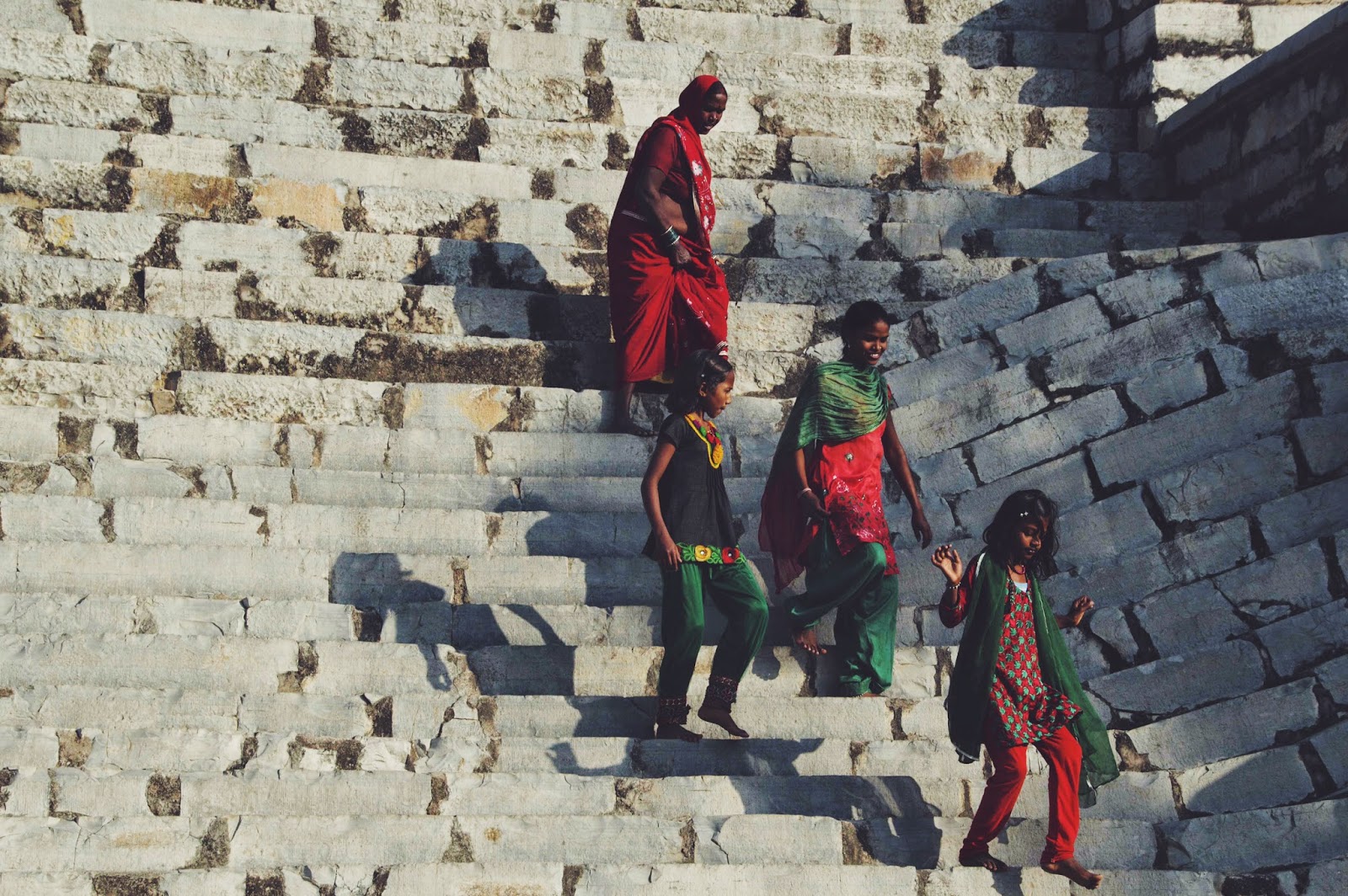 |
| Walking diagonally is the easiest way to come down |
The area was lightning and earthquake prone and many advances were made to save the Shivlings from these. One would imagine the Shilvlinga to be in the centre inside the Garbha griha, but that's actually not true; its actually located about two inches off-centre to save the deity from lightning. It seemed that this was always followed by ancient temples, not so anymore. Many architectural modifications were made to save the temple from earthquakes. Centuries ago, when a big earthquake hit the area all the other temple collapsed completely but this one survived, still largely intact.
Balesvara Mahadev Temple Complex
This is a 6th Century Shiva temple built by Mahashivgupt Balarjun. Interestingly he used a slightly different name for himself while he meditated at the temple to show how he was a servant to God. The name found in the inscriptions gives his name as Mahashivgupt Rajas.
 |
| Remains of the temple... |
 |
| Posing with Mariellen |
This is also a Panchayatan Shiva temple - two temples in centre and four in the corner. The
Garba griha was star shaped. All pillars were made with dolomite which is one of the hardest stone and also most difficult to carve.
There are two temples because the king had two wives - one from Chhattisgarh and the other one from Karnataka. The 48 sculptures found at the temple explain in detail the perils of having two wives. These temple are known as
Balasvara and Udaisvara Mahadev temples.
Other things to do
There are multiple other things one can do in and around Sirpur:
- Ram Temple
- Gandheshwar Temple
- Museum
Some excursions include:
- Arang
- Barnawpara sanctuary
Where to stay?
The best place to stay at Sirpur is Hiuen Tsiang resort in town, which is run by the Chhattisgarh Tourism. It's located quite close to the excavation sites and you can actually walk to most of those from here.
The room rent is Rs 1500 for double occupancy. Here is a
link to the site.
When to visit Sirpur?
There are two good seasons to visit Sirpur and Chhattisgarh in general. The best season is winters between November and March when the temperature is very pleasant and one can actually walk to these excavation sites which are spread over quite a large area.
Apart from winters, monsoons are also beautiful here. The entire region turns magically green and it's also perhaps the best time for photography.
How to reach Sirpur?
Sirpur is located at a distance of about 85km from Raipur and to reach there one has to first reach Raipur. Raipur has a fantastic new airport with multiple flights from Delhi and Mumbai, and also Kolkata. The fight timings are generally in the morning or evening which works well. Raipur is also well connected by railways.
However, Raipur and
Sirpur are not well connected. During the festival days, tourism department runs special buses to bring in tourists and the same buses take you back in the night. During non-festival days, the best way is to book a cab and come. Since, many of the excavation sites are not close by, a cab could be handy.
Here is a map, if you intend to drive
View Larger Map

















Its very well written and informative. Did not know that Sirpur had so much Archaeological significance.
ReplyDeleteGreat post very informative, I have learned many things about Travelling from this blog, Chennai Car Rental is the best travel company in Chennai.
ReplyDeletenice to see; that
ReplyDelete